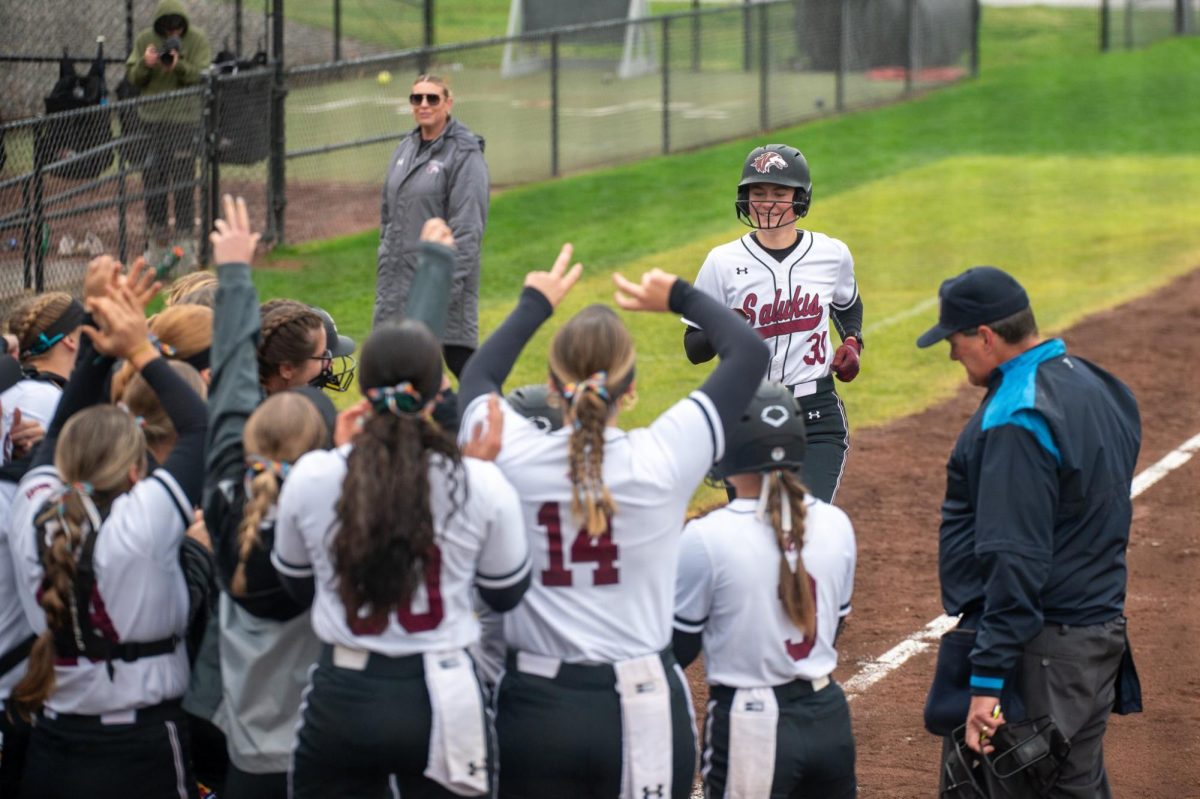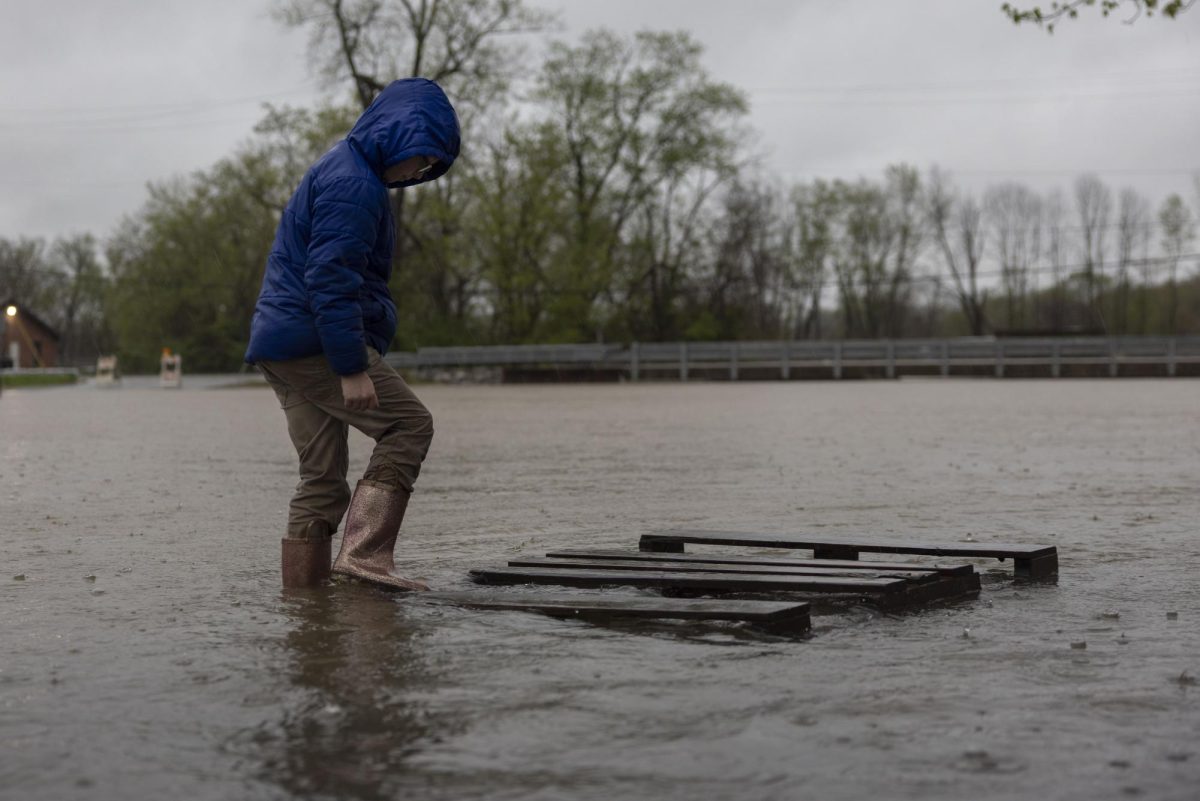In the midst of increased academic scrutiny from the NCAA, the SIU Athletic Department says it has nothing to worry about
April 2, 2003
In the midst of increased academic scrutiny from the NCAA, the SIU Athletic Department says it has nothing to worry about
Oklahoma came under fire from the NCAA last week for its 0-percent graduation rate among men’s basketball players, as did the other three No. 1 seeds in the NCAA tournament – Texas, Kentucky and Arizona.
In a rare comparison to basketball powerhouses such as the ones mentioned above, if SIU had earned a return trip in the Sweet 16, it would have been scrutinized for the very same statistic.
Advertisement
But as the NCAA threatens to tighten the noose on schools that do not graduate their players, threatening them with forfeited scholarships and even postseason banishment, the SIU Athletic Department remains unconcerned about possible sanctions.
In fact, it welcomes them.
SIU Athletic Director Paul Kowalczyk said he favors a system proposed last week by NCAA President Myles Brand of rewarding and taking away scholarships from schools based on their academic performance – mainly because he thinks SIU would receive a lot of those rewards.
“I’m all in favor of that,” Kowalczyk said. “I think you need to try to reward those who try to do some of the right things.”
And SIU maintains it is doing the right things, saying the men’s basketball graduation rate is misleading – a common criticism of the current system.
“If I looked at this 2002 rate right now, it reads 0 percent,” said Kristina Therriault, director of student services for intercollegiate athletics and the school’s college statistics guru. “I know how many student-athletes that refers to and to base it on that, it doesn’t show what we’re doing right now.”
She makes a convincing argument.
Advertisement*
SIU currently exceeds the NCAA minimums for graduating athletes and is hovering around the national average for overall graduation rates. Though Kowalczyk was cautious not to declare the program a complete success, he said the Salukis are thriving academically.
SIU as a whole graduated 54 percent of its student-athletes from the 1995-96 freshman class and averaged 56 percent for that year and the three years preceding it. Both numbers were significantly higher than the student body as a whole, as were the Grade Point Averages of Saluki athletes.
Since 1986, SIU has graduated 87 percent of its athletes who played four years at the school.
“Sometimes I feel I always have to justify our existence to the student body, and to the academia sometimes,” Kowalczyk said. “People need to know that our athletes are actually doing better than the student body.”
But some numbers do not reflect that, which is why Kowalczyk also acknowledged the need for a system more accurate than the NCAA’s current one to measure academic compliance – the same system that gave SIU men’s basketball a zero percent graduation rate.
Under current rules, a school is given six years after a player’s freshman year to graduate him, and if that player does not graduate from that specific university after the allotted six years, it counts as a non-graduate.
If a player transfers and graduates from another university, he is counted as a non-graduate for the school he transferred from and is not accounted for in his new school’s graduation rates. That is something Therriault said needs to be accounted for in any new formula to judge a school’s academics.
“You can’t just base your rate on freshmen,” Therriault said. “They need to look at transfers that graduate, and I don’t think it should count as a non-graduate when someone else goes to another institution and graduates from that school.”
She used the example of Rolan Roberts to illustrate the flaws in the system. Roberts transferred to SIU last year as a senior and graduated, but as far as graduation rates go, he never attended school in Carbondale.
And though Roberts possesses a degree, the records at Virginia Tech, where he transferred from, will indicate he never graduated.
“In the 20 years I’ve been in college basketball they’ve talked about changing it,” SIU head coach Bruce Weber said about what he considers a flawed system. “But it never happens and they keep publishing reports that make everyone look bad.
“It’s almost like propaganda with the war.”
Since Weber took over SIU’s program five years ago, only one player failed to graduate. Monte Jenkins, a member of the 1995-96 freshman class that received the 0-percent graduation rate, stands as the only Saluki player to exhaust his eligibility under Weber.
Jenkins was recruited and coached for three years by ex-Saluki head coach Rich Herrin. Every player recruited under Weber has either graduated or is on track to graduate, meaning a zero percent graduation rate is not likely to surface again at SIU.
SIU will show 0 percent for its men’s basketball program next year simply because it had no freshman in the 96-97 campaign. But the next class includes Kent Williams, Jermaine Dearman, Brad Korn and Sylvester Willis, all of whom are expected to receive a diploma.
“From the day I got here we tried to make the kids understand it was the No.1 priority,” Weber said of classroom performance. “I know our guys aren’t going to be perfect and go to every class but at the same time, it’s still got to be something they take pride in. Their No. 1 goal should be to get a degree.”
Weber has forced players to run extra laps for not attending class and even went as far as to bench players when it became a problem. In SIU’s other big program, football, head coach Jerry Kill cut a huge chunk of the team when he took over two years ago, in part, for the same reason.
Because of what he feels is a legitimate effort on behalf of his department to curb academic wrong-doing, citing specifically Weber and Kill, Kowalczyk said he is in favor of punishing athletic departments that show apathy toward academics.
He does not support banning programs from the NCAA tournament, but at the same time wonders if the NCAA will eventually have to go that far.
“That may be a bit harsh,” Kowalczyk said of the possibility. “But I think perhaps we need to take harsh measures for some schools to get the message.”
But in all likelihood, SIU’s future obstacles to the NCAA tournament will be the teams in the Missouri Valley Conference tournament, not the teachers in a classroom.
Reporter Michael Brenner can be reached at mbrenner@dailyegyptian.com
Advertisement








